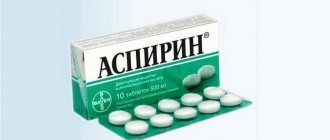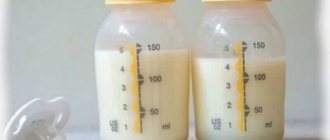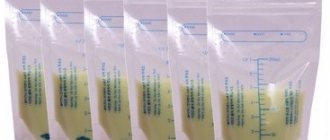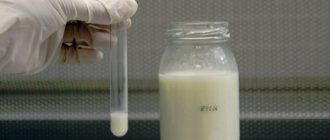Author:
gastroenterologist Anton Smirnov
4 minutes
3968
During breastfeeding, a woman may feel hungry much more often and stronger than usual, and this is normal. The process of making breast milk in the body increases daily energy requirements by about 500 calories. There is also an increased need for specific nutrients such as protein, vitamins D, A, E, C and B12, selenium and zinc.
Here are some healthy and tasty foods that you should include in your diet while breastfeeding, provided that you have no contraindications to them:
- Fish and seafood: salmon, seaweed, shellfish, sardines;
- Meat and poultry: chicken, beef, lamb, pork, liver;
- Fruits and vegetables: berries, tomatoes, sweet peppers, kale, garlic, broccoli;
- Nuts and seeds: almonds, walnuts, chia, flax and hemp seeds;
- Healthy fats: avocado, olive oil, coconut, eggs, full-fat yogurt;
- Fiber-rich starches: potatoes, butternut squash, sweet potatoes, beans, lentils, oats, quinoa, buckwheat. Note that it is recommended to introduce legumes into your diet no earlier than the baby turns three months old in order to avoid problems with excess gas formation;
- Other foods: tofu, dark chocolate, kimchi, sauerkraut.
It is also worth minimizing your consumption of fast food and sugary breakfast cereals, which can be replaced with muesli and granola, for example.
What and how gets into breast milk?
You will be interested in: How to understand whether you are beautiful or not: test analysis, beauty standards, classical proportions and individuality
How long does it take for food to pass into breast milk? First of all, let's remember the school biology course. Both harmful and beneficial substances are absorbed into the human blood in the small intestine.
3-4 hours after eating, your lunch ends up in the small intestine. It takes approximately the same amount of time to be digested in this organ. There the products give nutrients to the blood. And she, in turn, saturates breast milk with them: proteins, a certain proportion of fats, minerals and even hormones (if the animal whose meat you ate was fed with special preparations containing growth hormones).
You might be interested in: What do housewives do besides housework?
All of the above will enter breast milk until the hour when food leaves the mother’s small intestine and moves into the large intestine. Therefore, there is no point in expressing milk if a woman realizes that she has eaten the “wrong” product. Harmful elements will enter the blood (and then into breast milk) throughout the day. For such occasions, it is important to have several bottles of frozen milk.
Glucose
Glucose enters after just 10 minutes of consuming the product, but this process ends after 30 minutes. Simple carbohydrates, which are easily absorbed by the body, can affect the sweetness of milk. For example, after taking honey, grapes, or any jam that contains similar carbohydrates, the milk will seem sweet to the baby, however, such food can affect the child’s skin and cause an allergic reaction. Also, sweets can provoke gas formation in the baby, which will cause him discomfort. Among other things, a young mother should stop drinking sugary carbonated drinks and limit her juice consumption.
Gas-forming products
We continue to analyze how long it takes for food to enter breast milk. This is important to know about gas-forming foods—those that cause gas in a baby. Such food includes raw fruits and vegetables, compotes, fresh juices from them, as well as fresh baked goods and milk.
When this food is processed, gases are formed in the mother's intestines. Some of them enter the blood. Consequently, into breast milk.
To prevent this, before or after eating such food, a woman should take a sorbent (activated carbon, Smecta, for example). The medicine is not passed through breast milk to the baby. Therefore, in case of gases, the child is given additional children's adsorbent medicine. It is important not to overdo it: along with harmful ones, the medicine removes beneficial substances, vitamins and minerals from the body.
You might be interested in: Colin Firth and his wife Livia Giuggioli. Films starring Colin Firth
How long does it take for food to pass into breast milk? In this case - after 1 hour. It will continue to flow for another 2-3 hours.

Foods with an increased risk of gas formation
According to most mothers, foods that lead to the accumulation of gas in the intestines can harm the baby. Additionally, it should be noted that the bloating product cannot be absorbed into the internal organs or blood. That is why such food cannot negatively affect the baby’s body. Colic and gas are products of the breakdown of large amounts of protein food. They lead to stomach upset and poor health of the baby. Pediatricians recommend completely abstaining from their use during lactation.
Nutrients
This is the name given to healthy foods that contain water-soluble vitamins. A new mother should try to eat such food as often as possible. This includes the following:
- Ascorbic acid content. Cranberries, citrus fruits, currants, parsley, rose hips, cabbage.
- Nicotinic acid content. Pork, liver, cheese, seafood, eggs, chicken, cereals, beans, potatoes, tomatoes, carrots, corn, nettles, parsley, mint.
- Thiamine. Wheat bread, kidneys, peas, spinach, beans, yeast, pork, beef, liver.
- Riboflavin. Almonds, mushrooms, liver, pine nuts, cottage cheese, cheese, eggs, rose hips, mackerel, goose, spinach.
- Pyridoxine. Bananas, shrimp, eggs, tomatoes, beef, sprouted grains, lamb, cheese, chicken, cottage cheese, potatoes, peas, herbs, cereals, nuts, berries.
It is important to note that water-soluble vitamins do not accumulate in the mother's body. Therefore, their content in breast milk can only be increased by eating a sufficient amount of the foods listed above every day.
How long does it take for food to enter breast milk during breastfeeding in this case? In 1-2 hours. At the same time, beneficial elements continue to enter the bloodstream for another 1-3 hours.

Allergens
How long does it take for food to pass into breast milk and into the baby during breastfeeding? It is important to know the answer to this question regarding products containing allergens. What does this mean? Please note the following:
- Citrus fruits, berries, red vegetables and fruits, seafood, grapes, soybeans, chocolate, honey, coffee, chicken eggs, cocoa. May cause rashes in infants. This does not mean that these products cannot be consumed at all. You just have to “accustom” your baby to them a little bit at a time.
- Whole cow's milk. Again, you should not refuse the product. The main thing is not to abuse it.
- Sauerkraut, cheese, sausages, long-frozen products. Contain a large amount of histamine.
- Herbal extracts, soluble-coated medications, preparations containing iron and fluorine, synthetic vitamin complexes.
- Sweet soda, shelf-stable milk.
- Crackers, chips. Glutamates can be found in the composition.
- "Artificial" vegetables. “Rich” in nitrates.
- Products containing saccharin or cyclamates (check the ingredients on the packaging).
Nutritionists do not advise mothers to drink more water if they want to flush the allergen from the body. This way it is only absorbed more strongly into the blood. Breastfeeding women need to pay more attention to single-ingredient products. Give preference to vegetables, fruits, cereals, milk, butter, and homemade baked goods.
How long does it take for food to pass into breast milk and the baby in this case? On average after 40-50 minutes. At the same time, she continues to receive:
- Vegetables: another 6-8 hours.
- Cow's milk: 3-4 hours.
- Flour products: 12-15 hours.
- Products with E-additives: within 24 hours.

Fat and sugar
Let’s immediately debunk a popular misconception. Many new mothers believe that by eating foods containing a lot of fat, they help their baby become plump. But this is far from true. By preferring such food, a woman primarily contributes to the accumulation of fatty tissue in her own body.
If you want your baby to grow strong and healthy, just feed him breast milk more often. What about sugar? In order not to overdo it with the content of this element in breast milk, give up cakes and sweets. These products sweeten it excessively.
How long does it take for food to pass into breast milk? Komarovsky (doctor, breastfeeding specialist) claims that fat and sugar enter it within 10 minutes after the mother has eaten a product rich in these elements. They continue to enter the blood (and then into breast milk) for another 30 minutes.

Anatomy of the mammary glands

Breast development begins in the womb, from approximately the fourth to the seventh week, when thickening of the skin in the armpit of the embryo is noticeable. From the sixteenth to the twenty-fourth week, such folds will disappear, leaving behind the rudiments of the mammary glands. Subsequently, they are transformed into milk ducts and alveoli, which store milk. Rapid changes in the mammary glands are observed during puberty, but doctors consider full maturation only after childbirth and full production of breast milk. The breast consists mainly of glandular tissue, the main purpose of which is the production and transportation of milk. Connective tissue performs a supporting function, and the delivery of nutrients is provided by the blood. Waste elements are eliminated through the lymphatic system. Also directly involved are nerve endings that transmit and receive impulses, and fat that protects the mammary glands from damage. Glandular tissue contains many alveoli. Their function is to store and “dispense” milk. The expulsion of milk occurs due to the compression of small muscle cells around the alveoli. The alveolar ducts connect into larger structures that carry milk out through small openings in the nipples.
Let's answer the question: Is it possible to introduce cabbage into the diet of a nursing mother?
Medicines and breastfeeding
However, there are drugs that provide the desired effect only with periodic systemic use. A striking example is oral contraceptives. How can we be here? You should definitely consult your doctor about their use.
The instructions for the pharmaceutical product can also help. It always indicates how long it takes for the medicine to enter the bloodstream and when it is excreted from the body. Based on this, it is worth building a feeding schedule for the baby.
Another important aspect: not all drug manufacturers have information about the harmful effects of taking such a drug by a mother during breastfeeding. It all comes down to ethical considerations: experiments on infants are strictly prohibited.
How long does it take for the medicine to enter the mother’s blood? You will learn about this by reading the instructions for the drug. How long it will continue to enter the blood is indicated exactly there. At the same time, the components of the medicine will pass into breast milk.

Alcohol
You already know how long it takes for food to enter and exit breast milk. What about alcohol? The question is quite ambiguous. After all, pediatricians strive to popularize breastfeeding among the population. Therefore, experts often dispel myths about certain prohibitions. For example, there are many foreign pediatricians who claim that a glass of beer or a glass of dry wine a day will not harm either the nursing mother or the baby. Is it so?
When alcohol enters the bloodstream, it is easy to feel without complex calculations. This happens at the moment when you begin to feel slightly intoxicated. It's also easy to know when it's being released. You feel that you are returning to your usual normal state.
The intervals depend on many factors at once: the characteristics of your body, the strength and amount of alcohol you drink, body weight, metabolic rate. On average, alcohol begins to enter milk a few minutes after it is taken. The process can last from 2 hours to several days.

How long does it take for food to pass into breast milk during breastfeeding? Kefir, citrus fruits, meat, baked goods, products with E-additives - everything has its own time intervals. The same goes for taking medications and alcohol.
Source
Iron
Breast milk contains a sufficient amount of iron, so the amount of food containing iron makes absolutely no difference. You need to know that it is absorbed differently in each woman, as well as in some babies, which is why anemia occurs.
Anemia is not a disease, it is a certain condition of the body, with it the concentration of hemoglobin decreases. This condition should be diagnosed by a doctor, but not by a very caring mother; accordingly, additional intake of vitamins and the introduction of complementary foods should also be prescribed by a pediatrician. Iron comes from food from 2 to 4 hours. This microelement is found in the following products: liver, buckwheat, apples, beets.
It must be remembered that a child deprived of dairy treats does not receive a lot of necessary vitamins and useful minerals. It is very useful to know over what period of time this or that food is digested, since in this way you can protect your baby from an allergic reaction, bloating, and other ailments, and this will definitely cause discomfort to his parents, in addition to himself. After all, if something bothers the child, he will not be able to sleep normally, eat, or go about his usual daily activities, which means he will not allow his tired mother to rest.
Source











